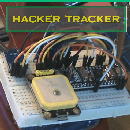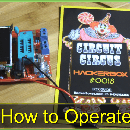Introduction: How to Solder SMD / SMT Components With a Soldering Iron
Surface-Mount Technology (SMT) and Surface-Mount Devices (SMD) are essentially just tiny little components that are soldered to the surface of the PCB, not through it like many larger components. The Radio-Electronics website and, of course, Wikipedia, have some good overviews of these kind of components.
The purpose of this Instructable is to show how I've successfully soldered some SMD components without any special tools, and to show some techniques you can try. I am not an expert; I'm simply a hobbyist without training; I appreciate all constructive feedback and tips in the comments below!
These pictures were taken as I assembled an ATMEGA328P based Transistor Tester - which I have documented in full, here: https://www.instructables.com/id/Circuit-Circus-in-Depth-Tech/
I thought a more focused Instructable might be helpful for those wanting only this specific information.
Instructables.com automatically compresses the pictures in the Instructable. Viewing the full sized picture may be more helpful in some cases; just click the picture, click it again, and you should see a way to view the "original image".
**Edit - 3 OCT: Be sure to read through the comments for additional great tips and pointers!
Step 1: The Solder and Soldering Iron Tip
Step 2: Cut Tiny Chunks of Solder
Step 3: Pick a Piece of Solder
Step 4: Place the Piece of Solder
Step 5: Melt the Piece of Solder
Step 6: Place the Component
Step 7: Solder the Component
Now it is fixed in place!
Step 8: Place Next Piece of Solder
Step 9: Solder the Next Leg!
Step 10: Inspect the Contacts
I'll provide one more example below, but this is basically how I've done it.
Step 11: Repeat the Process!
Step 12: The Next Completed Piece
And this concludes the Instructable. I hope it is helpful for your projects!~













